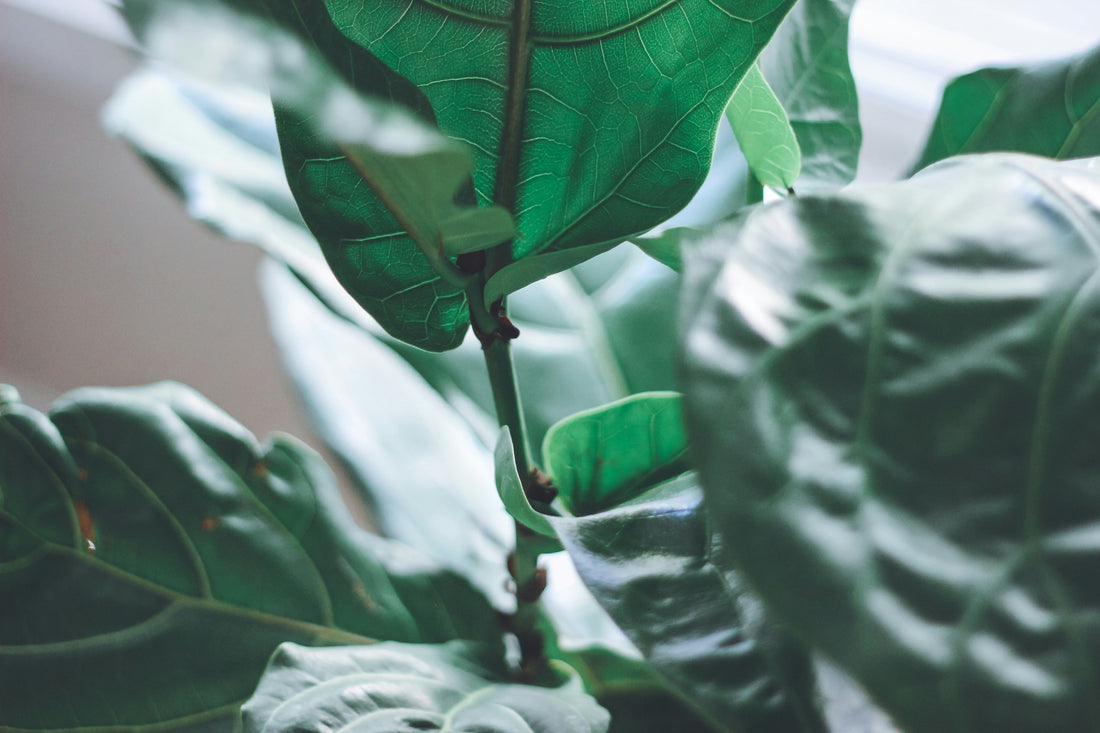
Comprehensive Fiddle Leaf Fig Care Guide: Tips for Thriving Indoor Growth
Share
Introduction
Transform your indoor space with the dramatic elegance of the Fiddle Leaf Fig. With its large, violin-shaped leaves and impressive vertical growth, Ficus lyrata is a favorite among plant enthusiasts seeking to add a touch of nature's grandeur to their homes. Originally from the tropical rainforests of West Africa, the Fiddle Leaf Fig thrives in bright, humid environments. Cultivating this plant indoors requires attention to specific care needs, but the reward is a stunning and resilient houseplant. Let’s dive into the essential care guidelines to help your Fiddle Leaf Fig flourish.
Fiddle Leaf Fig Houseplant Basic Care
Maintaining a Fiddle Leaf Fig involves meeting its unique needs. Here are the primary care tips, covering light, watering, humidity, temperature, and fertilization, to ensure your plant thrives.
In-Depth Care Guidelines
Light:
Fiddle Leaf Figs thrive in bright, indirect light. Place your plant near a window with filtered sunlight throughout the day, but avoid direct sun, which can burn the leaves. Rotate the plant occasionally for even light exposure.
Watering:
Water the plant when the top inch of soil is dry. Fiddle Leaf Figs prefer consistently moist soil but are sensitive to overwatering. Ensure the pot has good drainage to prevent root rot. Reduce watering during the winter months when growth slows.
Humidity:
These plants do best in moderate to high humidity. Increase humidity by misting the leaves, using a humidifier, or placing the plant on a pebble tray with water, especially in dry indoor conditions.
Temperature:
Optimal temperatures for Fiddle Leaf Figs range between 60°F and 75°F (16°C to 24°C). Protect the plant from drafts, sudden temperature changes, and cold air, which can cause leaf drop.
Fertilization:
Feed your Fiddle Leaf Fig with a balanced, water-soluble fertilizer once a month during the growing season (spring and summer). Reduce feeding in the fall and winter.
Troubleshooting Common Issues
Yellowing Leaves:
This often indicates overwatering or poor drainage. Adjust your watering routine and ensure the pot has adequate drainage.
Brown Leaf Edges:
Brown edges can signify low humidity, underwatering, or inconsistent watering. Increase humidity around the plant and maintain a regular watering schedule.
Pests:
Be vigilant for pests like spider mites, aphids, and scale. Inspect your plant regularly and treat it with insecticidal soap or neem oil if pests are detected.
Additional Pro Tips
- Dust the leaves regularly to allow the plant to absorb light more effectively and keep it looking vibrant.
- Pruning helps shape the plant and remove any damaged or unhealthy leaves. Trim back any leggy growth to encourage a fuller appearance.
- Repot your Fiddle Leaf Fig every 1-2 years to refresh the soil and accommodate growth.
Pet Safety
Fiddle Leaf Figs are toxic to pets if ingested. Keep the plant out of reach of cats and dogs to prevent potential health issues.
Precautions
Place your Fiddle Leaf Fig in a stable environment, avoiding locations with fluctuating temperatures or direct sunlight, to maintain a healthy and happy plant.
Frequently Asked Questions (FAQs)
How often should I water my Fiddle Leaf Fig?
Water when the top inch of soil is dry, typically every 1-2 weeks. Adjust based on your home's temperature, light, and humidity levels.
Can Fiddle Leaf Figs grow in low light?
These plants prefer bright, indirect light and may struggle in low-light conditions. For best results, place your plant near a well-lit window.
What should I do if my Fiddle Leaf Fig's leaves turn brown at the edges?
Brown edges usually indicate low humidity or inconsistent watering. Increase humidity and ensure you are watering consistently.
Is it difficult to grow a Fiddle Leaf Fig indoors?
With proper care regarding light, water, and humidity, Fiddle Leaf Figs can thrive indoors and make a stunning addition to your plant collection.
How can I increase humidity for my Fiddle Leaf Fig?
Increase humidity by misting the leaves, using a humidifier, or placing the plant on a pebble tray with water.
By following these detailed care instructions and addressing common concerns through the FAQs, you’ll be well on your way to enjoying the lush, vibrant growth of your Fiddle Leaf Fig. This plant not only enhances your indoor garden but also adds a touch of tropical sophistication to your home.
